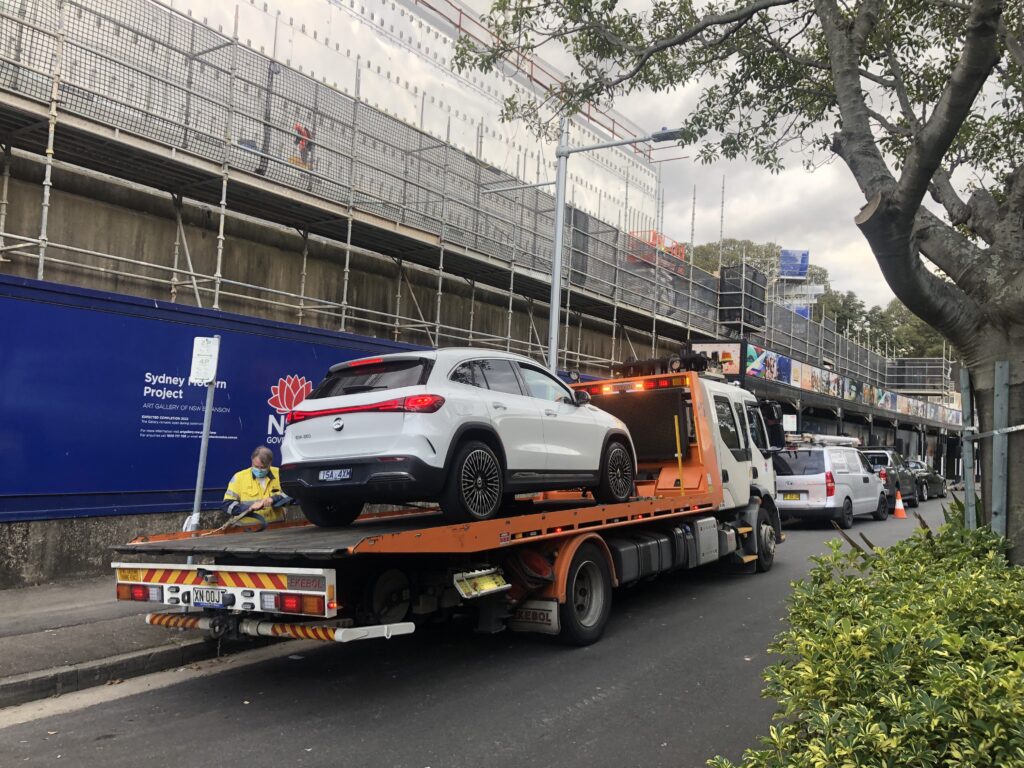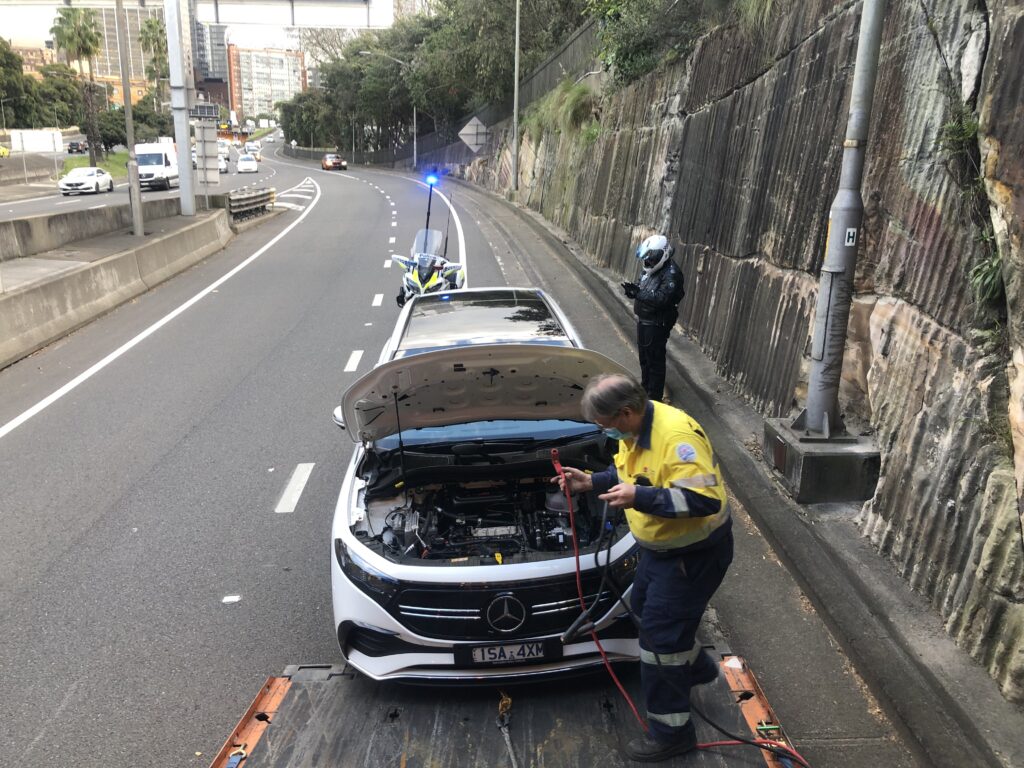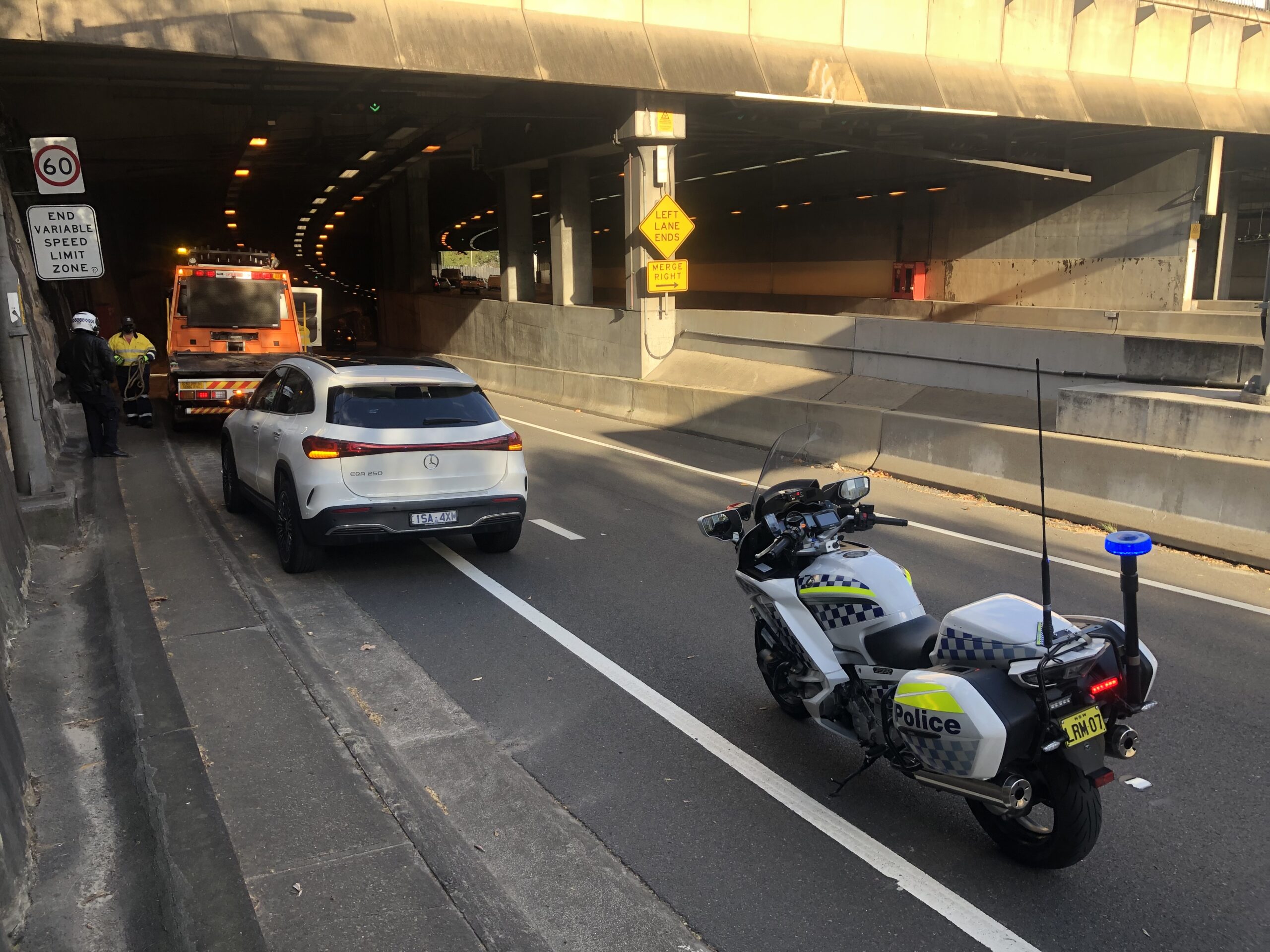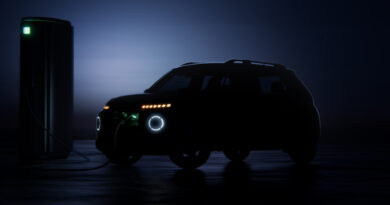Why our Mercedes-Benz EQA finished up on a tow truck
Things don’t always go swimmingly at the launch of a new car, as we learnt recently when experiencing the Mercedes-Benz EQA250 for the first time.
The day started as usual with our goal to sample the latest arrival to the Mercedes-Benz EV family.
It involved some around-town running, a freeway cruise and some typical country roads – all the sorts of things a new EV might be expected to do.
FULL REVIEW: 2021 Mercedes-Benz EQA250
We’d done almost 270km and were heading to a Chargefox ultra rapid charging station for a top up.
But things turned south during the busiest part of our trip. Having just driven southbound across the Sydney Harbour Bridge and into the first of the tunnels that take you to the south of Sydney the EQA lost all drive.

Warning lights alerting of “malfunction” and “inoperative” flashed up on the digital instrument cluster that had taken on new shades of orange and red.
The EQA250 was not happy.
More importantly, it had given up on the task of driving.
Shuffling to the left lane as my speed slowed, I flicked the hazard lights on and tried to limp the car to somewhere quieter.
That’s a big ask on one of Australia’s most heavily trafficked pieces of bitumen as peak hour looms.
But I managed to at least get the car off towards one of the exits before pulling up stumps on the side of the road.

The situation had improved, but the car was still in a precarious position.
With some time on my hands, I set about trying to reboot the car. Locking and unlocking doors, pressing the start button, trying to engage Drive, engaging then disengaging the park brake … and anything else I could think of.
By which time a motorcycle policeman had stopped to ask what was wrong.
He made it clear he wanted to car moved and if it wasn’t going to do so under its own electrons he would do it with a flatbed tow truck of his choosing.
The Mercedes-Benz Road Care emergency assistance line could only offer a tow truck within the hour (hopefully).
The officer wasn’t content with that, so arranged for an emergency tow truck to get us off the busy thoroughfare. Its job is to get the car out of danger. Our tow lasted about 400 metres.
During the challenge of getting the car on the tow truck the tow truck operator noticed the 12V battery (all EVs have a 12V electrical system as well as the high voltage system to power the car) had a loose connection.

Yet even with the car picking up power the car wasn’t getting rid of those warnings, at least initially.
Once out of the danger zone, a circa-10-minute stint with the battery disconnected eventually cleared all the errors. The EQA could again drive under its own power.
Not that it was being allowed to. It was bundled on to another tow truck to be sent to a dealership and analysed.
We were later informed the failure to proceed and numerous warnings were the result of a “weak connection” on the 12V battery terminal. In the process of preparing the car for the local media launch the 12V battery was temporarily disconnected and it wasn’t properly tightened once reconnected.
Why the car decided to expire at that moment is unknown. We’d driven more enthusiastically and on more challenging roads than the smooth bitumen of a Sydney tunnel.
But for whatever reason there appears to have been a split-second where the 12V battery didn’t supply electricity to the computer that is key to operating the high voltage drive system.
The car then went into its mini meltdown.
All of which was a reminder of how critical electronics – and electrical connections – are in modern cars.




